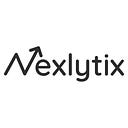What Works and What Doesn’t with the Prophet Forecasting Model for Retail

In the fast-paced and evolving retail landscape, accurate demand forecasting is crucial for optimizing inventory, driving sales, and minimizing waste. At Nexlytix, our expertise in both retail operations and advanced modeling positions us to evaluate the most effective tools in the market. One such tool is Facebook’s open-source Prophet model, which has shown promise across multiple industries. However, its application in retail comes with both notable strengths and potential limitations. In this post, we’ll leverage our domain and modeling expertise to explore where Prophet excels in retail forecasting and where further refinement may be needed.
What Works:
Handling Seasonality and Trends
One of Prophet’s strongest suits is its ability to model multiple seasonality patterns simultaneously. For retailers, seasonality isn’t just an annual event — it’s a weekly, even daily occurrence. Sales fluctuate with customer footfall over the weekend, and Prophet excels in capturing these intricate patterns, helping brands better plan their stock and staffing.
Dealing with Missing Data
In retail, clean data is a luxury. Stores might have missing sales figures due to system downtime or incomplete logs, but Prophet’s robust handling of such gaps is a unique value add against the traditional models. Rather than treating missing data as outliers or simply ignoring them, Prophet seamlessly interpolates them, giving you cleaner forecasts without excessive manual intervention.
Holiday and Promotion Effects
Prophet’s ability to include holiday effects makes it stand out in retail forecasting. Analysts, planners, or engineers can easily tag holidays, sales periods, or even Black Friday events to capture spikes in demand. This ensures your predictions are reflective of real-world retail conditions, helping prevent stock-outs or over-ordering during these high-traffic times.
What Doesn’t Work:
Promotions and demand spikes (Outliers)
Retail is often driven by unpredictable spikes — whether from flash sales or stock-outs. Prophet’s default model doesn’t handle sharp promotions well. These events can skew the forecast unless specifically adjusted for in the data, leading to overly optimistic or pessimistic projections. Outlier detection and handling must often be incorporated manually to ensure more accurate results.
Limited Interactions with External Factors
In a retail setting, forecasts driven by external factors like weather conditions or competitor pricing can significantly impact demand. While Prophet does allow for the inclusion of external variables, its approach to handling these is relatively basic. Retailers might find that more advanced models, which allow for dynamic interaction with these factors, could outperform Prophet in these scenarios.
Struggling with granular forecasts
One area where Prophet tends to underperform is in generating granular forecasts, such as store-level predictions across multiple locations. Nexlytix’s own internal comparison against advanced models showed that Prophet, while simpler to implement, may underdeliver in highly volatile retail segments such as fashion, where rapid changes in consumer behavior make predictions much harder. In these cases, a more sophisticated approach may be necessary.
To address this, retailers can consider using more advanced feature engineering to integrate external variables like local economic conditions, weather, or promotional events into their forecasting models. Alternatively, hybrid approaches combining Prophet with machine learning algorithms like Random Forest or Gradient Boosting can better capture these non-linear relationships and unpredictable shifts in demand. The added complexity, while requiring more expertise, can offer more precise, location-specific insights that lead to better decision-making at a store level.
Comparison with Advanced Models
In fast-changing retail segments — like fashion or electronics — Prophet may underperform compared to more advanced models like XGBoost or LSTM-based forecasting. Prophet works best when patterns are predictable, but its default settings might not suffice in highly volatile environments. Additionally, univariate models like Prophet often struggle when predicting external regressors, which can introduce significant error factors when trying to model complex, multi-dimensional retail data. When these external influences play a large role in sales outcomes, more robust, multivariate models may be necessary to capture the full picture.
When Nexlytix compared the Prophet with more complex solutions, it became clear that while the Prophet’s speed and simplicity are valuable, they sometimes come at the cost of accuracy in dynamic retail scenarios. Therefore, the choice of forecasting model should carefully weigh Prophet’s ease of use against the potential for underperformance in volatile sectors.
Conclusion: Balancing Simplicity and Accuracy
While Prophet is a versatile and easy-to-implement tool for general retail forecasting, there may be better choices for granular or volatile predictions. At Nexlytix, we advocate for a balanced approach — leveraging Prophet for broader forecasts while integrating more advanced models where necessary. The key takeaway is to assess the unique requirements of your business before settling on a solution.
For more information, contact connect@nexlytix.com for a complimentary evaluation of your data, allowing us to identify the best-fitting model(s) for your needs.
What’s your experience with forecasting models? Join the conversation — drop your thoughts in the comments below, or reach out to us to discuss how we can help optimize your forecasting strategy.
